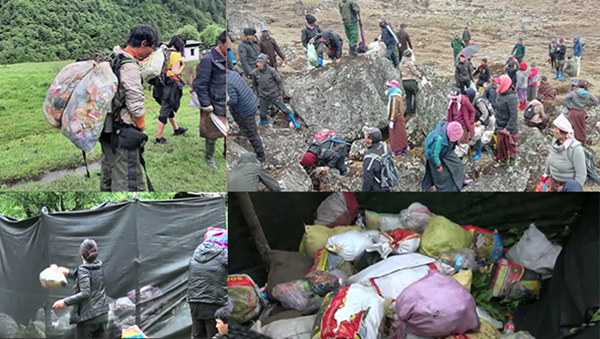 The waste management strategy of imposing a security deposit of Nu 1,000 on all Cordyceps collectors of Chhoekhor Gewog in Bumthang has helped in reducing waste in Cordyceps collection sites. Under the strategy the Wangchuck Centennial National Park and the Chhoekhor Gewog office started last year, all collectors have to declare everything they take into the collection sites and bring the waste back once they return home.
The waste management strategy of imposing a security deposit of Nu 1,000 on all Cordyceps collectors of Chhoekhor Gewog in Bumthang has helped in reducing waste in Cordyceps collection sites. Under the strategy the Wangchuck Centennial National Park and the Chhoekhor Gewog office started last year, all collectors have to declare everything they take into the collection sites and bring the waste back once they return home.
Cordyceps collectors brought back sacks of waste as far as from Gangkhar Phuensum after the month-long Cordyceps collection period, last year. Each individual was required to bring back at least five kilograms of non-degradable waste. After weighing the wastes they brought back, officials dumped them in an enclosure at Nangsiphel. People were able to collect about three tonnes of waste.
“During the month-long Cordyceps collection period, close to a thousand people enter the collection sites which heavily litters the mountains. That’s why we introduced a strict waste management strategy and from last year’s record, we can say that people are bringing back 80 to 90 per cent of the waste they take into the collection areas,” said Tshering Dhendup, the Chief Forestry Officer at the Wangchuck Centennial National Park.
Until last year, people were also advised to bring back the waste but without a security deposit system in place, people brought back only about 30 per cent of the total waste taken into the collection areas. This year, the quantity of waste has been reduced to three kilograms per individual, as people were unable to meet the five-kilogram requirement last year. Besides littering the alpine meadows, non-degradable waste is also harmful to the mountain ecosystem.
“Firstly, plastics are non-degradable. Secondly, all medicinal plants and herbs including Cordyceps stop growing once plastics cover their habitats. Moreover, due to littering, the growth of alpine meadows is also affected which shrinks the grazing ground for mammals indirectly disrupting the food source of snow leopard,” he added.
The Wangchuck Centennial National Park also plans to involve the local communities and volunteers to conduct a mass cleaning campaign along the trekking routes and Cordyceps collection areas in the next financial year. With over 80 collection sites, the Wangchuck Centennial National Park has the largest Cordyceps collection area in the country. Spread across Bumthang and Wangduephodrang districts, over a thousand collectors visit the areas annually, taking tonnes of waste into the park.
Kipchu, Bumthang












